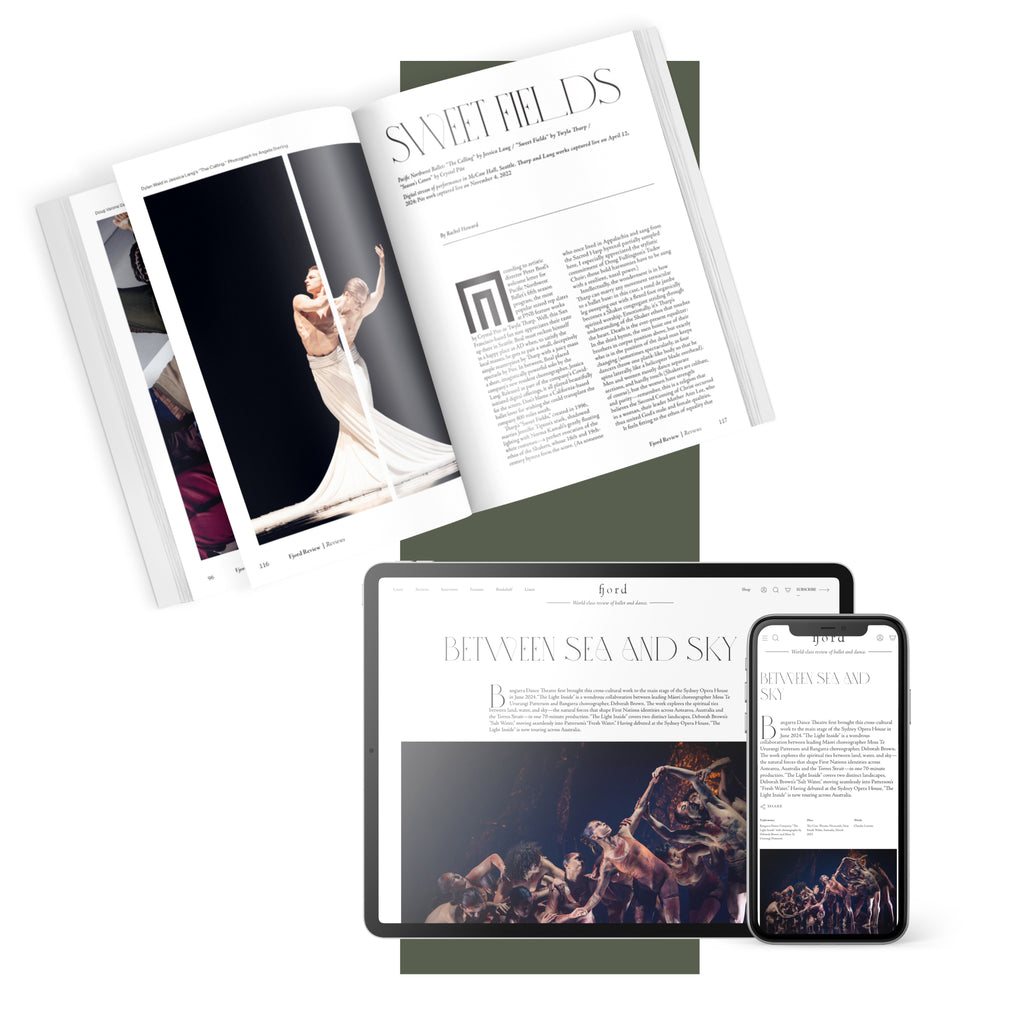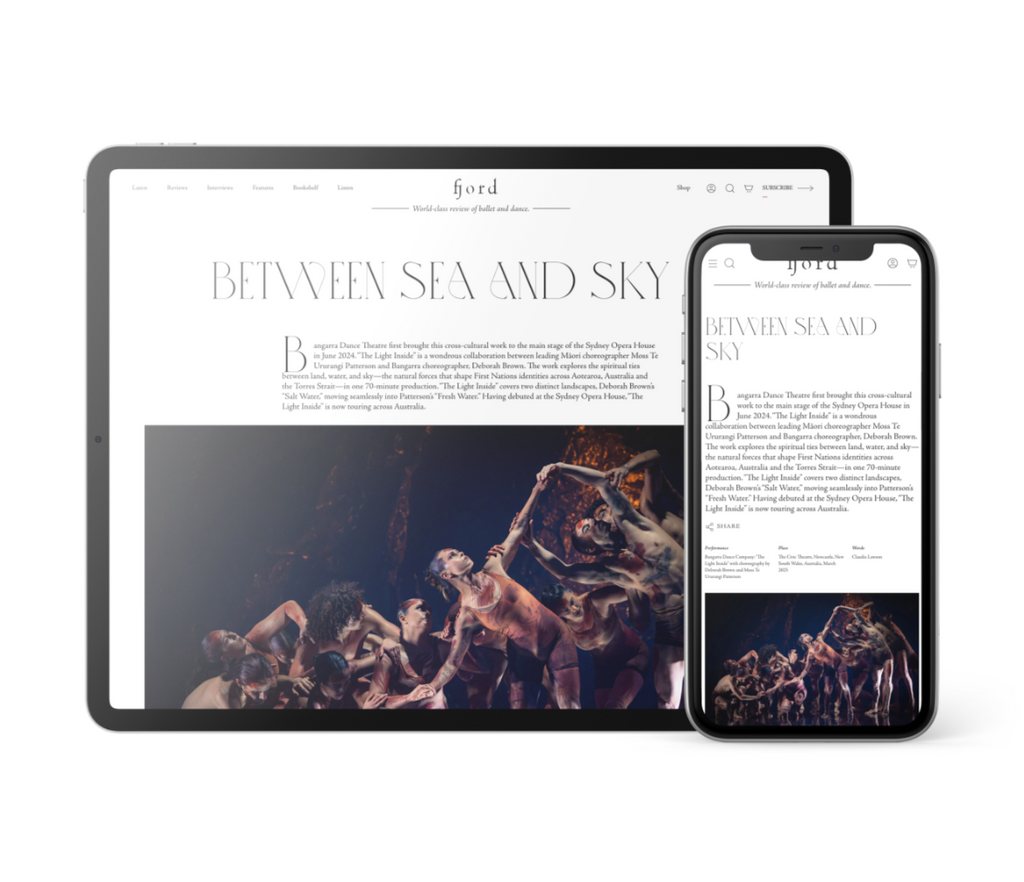Music From The Sole infused the evening with its refreshing, irresistible energy. This ensemble, in which every dancer is a musician and most of the musicians dance, calls itself a tap dance and live music company that celebrates tap’s roots in the African diaspora. Led by Brazilian tap dancer and choreographer Leonardo Sandoval and composer and bassist Gregory Richardson, the 10 dancers and musicians create a sonic tapestry through the physical activity and artistry of their dancing in addition to their instrument playing.
In this new work, still untitled and in development, the tap boards are laid out onstage, zigzagging around home furnishings and musical instruments like rooms and hallways inside a home. A performer walks onstage with his cellphone, sits down at a desk to write in his diary, and turns on some music through his phone. The others stroll in casually—a couple saunters in immersed in conversation, some sit down in various furnished spaces and lace-up their tap shoes, and others sit down to play their instruments. It feels like a jam session at someone’s home, and we in the audience have come to the party.
With Music From The Sole, the dancing is treated as a line of percussion—part of the music-making. The dancers create an endless symphony of sound qualities and textures using tap shoes, stocking feet, and various forms of body percussion. They even produce multiple lines of percussion simultaneously—dancing one complex set of rhythms with their feet and playing another on hand-held instruments.











comments